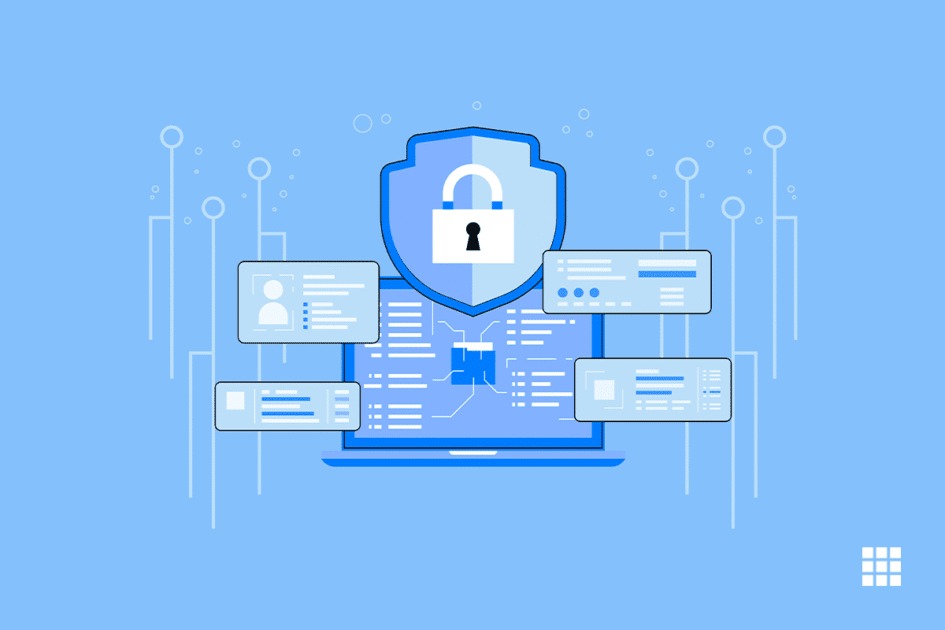Securing a dedicated server that you support for your website or application should be your top priority. An insecure dedicated server can lead to security damage, data loss, and loss of performance as well. Cyber attacks are on the rise every year, with data damage costing businesses nearly $ 4 million each. Hence, a dedicated server’s security has never been more important than it is today.
By securing your dedicated server, you can guarantee that your hosting and website will be protected from password breaches, software vulnerabilities as well as malware. In this article, we will look at the most important security vulnerabilities and the best practices for protecting dedicated servers against them.
How to protect your dedicated server?
1. Installing updates and security patches
Older software is one of the most vulnerable vulnerabilities exploited by hackers. Most application developers release regular security patches that address potential security issues with their software. If you skip downloading any of these fixes, someone may benefit from an undiagnosed vulnerability. Never rely on outdated programs and services.
Even the slightest delay in updating the latest security fixes can be detrimental. Therefore, you should always check for software updates on a regular basis. If you find that installing security updates and patches on a regular basis is too much, you should consider choosing a managed dedicated server.
2. Use of DDoS protection
Dispersed denials or counterattacks are used to destroy websites or even entire servers. A sudden spike in traffic is sent to your server, causing a crash and eventually a crash. Your intention will always lead to the expected financial loss of the company. DDoS attacks can’t make your website or web application accessible to users, so it’s important to prevent them.
The only way to protect yourself from these attacks is to choose a DDoS-protected server. These servers have a single DDoS shield that monitors all inbound traffic. If malicious traffic is detected, connection requests will be transferred from your server. At the same time, legitimate traffic can flow so your users don’t experience any disruption.
3. Change your SSH ports
Most services run on standard SSH ports. Runners know how to compromise the security of dedicated servers by supporting ports. The SSH port is the weakest. Since it is usually installed at 22, runners use search software to find visitors who have not changed their SSH port.
Change SSH port immediately to prevent malicious attacks. It can be converted to a different port, but it is recommended to change it to a port number more than 1024. Most port inspectors work in a group that does not normally inspect above 1024. This protects your SSH port from automated robots and scanners.
4. Always use trusted networks
Another important security checkpoint is to use your login credentials and always use trusted networks when logging in to your dedicated hosting service.
A local area network connected to your computer can be a quick security point if there are security vulnerabilities. In fact, anyone in your business can pose a risk by logging on to a public network server. Therefore, implement procedures that require the network as a reliable and secure network to log on to the server.
Be careful and decide who has access to the server, and change your credentials regularly to gain an extra layer of security.
5. Backup your data
Always back up important data, or back them all up. You may experience data loss at some point. Whether it’s caused by a hacker attack, a hardware failure, or a natural disaster, it can happen no matter how many security measures you take.
Do not put eggs in the same bowl. There should be multiple backups of different media types. The best backup procedure you can use is a 3-2-1 data backup strategy. Make at least three backups and store them on two different storage devices.
For example, you can store one backup on one hard disk in the office and another on a secure dedicated backup server. Therefore, one of the backups should not be in place – do not replace them all. If all your deposits are inside the burning building, you will lose everything.
Conclusion
Securing your dedicated server is the first step to becoming free of virus and malware attacks, but most importantly it is the first step to ensuring the smooth running of your hosting and website. You can read more about optimizing your dedicated server for performance here. Hope you have enjoyed reading this article. For any questions or queries, please share the same in the comments section below.



Write A Comment